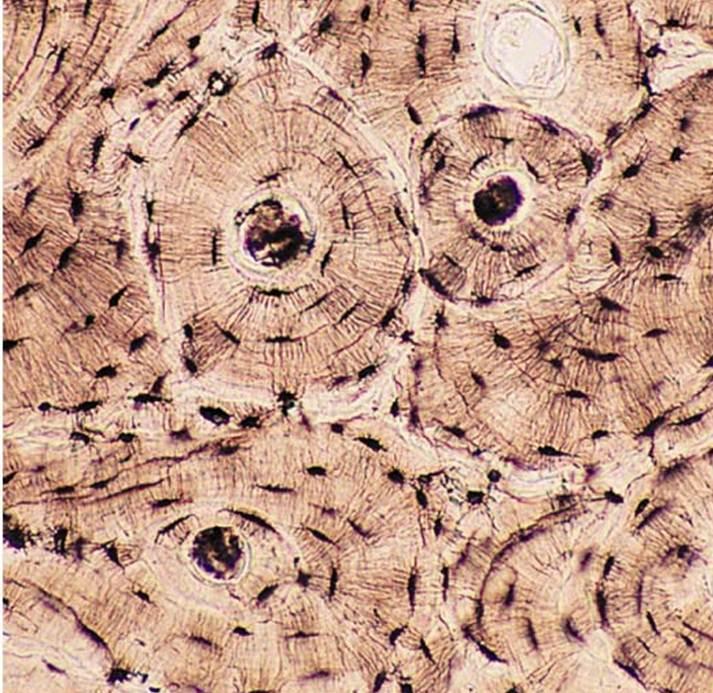The study of bone is known as Osteology. The bone connective tissue is highly calcified, solid, hard, rigid connective tissue. The matrix consists of an organic component called ossein. It is the major component of adult vertebrate endoskeleton.
Components
The major component of vertebrate bone is calcium phosphate. It also includes calcium carbonate, magnesium phosphate and sodium chloride. These salts are collectively known as hydroxyapatites. It forms the major part about 2/3 of the body weight. The matrix consists of 67% mineral salts and 33% collagenous protein fibres.
Decalcification
If a bone is kept in dilute acid for few days, it becomes soft and flexible; this process is called decalcification of bones. A bone kept in KOH remains unaffected. If bone is burned, it becomes brittle as its organic phase is destroyed.
Structure
It is hard, solid, rigid and calcified connective tissue. It is externally covered with periosteum and internally consists of endosteum. Tips of bone consists of soft, smooth, with many spaces called spongy bone. The middle, long, elongated, solid, hard, rigid with haversian canal etc called compact bone.
Study of Traverse Section
The traverse section of bone shows the following layers:
- Periosteum
The outer most covering part of bone is hard, dense and made up of white fibrous connective tissue i.e. known as perioteum.
It contains blood vessels and nerve fibres. Just below the periosteum, there is presence of osteoblast cells which divide to form new bone cells. - Endosteum
In the centre of compact bone consists of a bone marrow cavity which is lined by endosteum. - Matrix
The matrix of the bone is called osssein, deposited in concentric rings called Lamellae which is situated between periosteum adn endosteum.
Between the adjacement lamellae are numerous small cavities called lacunae. The lacuna gives off numerous small, branchess like tubules called canaliuli. Each lacuna encloses a single osteocyte cell. The canaliculi are interconnected with other lacunnae in matrix. - Haversian canal
The central part of compact bone consist narrow tube like structure i.e called haversian canal. The haversian canal consists of blood vessels, lymph vessels and nerve fibres.
The Lamallae, canaliuli and osteocyte cell in the lacunae are arranged concentrically like ring and surrounding the haversian canal and forms a system i.e. collectively known as Haversian system. The haversian system is absent in spongy bones of mammals.

T.S. of mammalian bone
Types of Bones
- Spongy bone
It is found in the expanded ends of long bones. The matrix is loose, spongy and with many spaces. It is filled with red coloured fatty substance i.e. called red bone marrow. The red bone marrow forms RBC and WBC. - Compact bone
It is found in the long, elongated, hard and rigid part of bone i.e. called compact bone. It forms the shaft of the long bone. The matrix is hard, solid, dense and without any spaces. The central part consists of canal like structure called Haversian canal. The haversian canal contains lymph vessels and nerve fibres. The matrix is filled with yellow fatty substance called yellow bone marrow.
Formation of bones inside the body that process is called osteogenesis. All the infectious diseases of bone is called osteomyelitis.

microscopic structure of compact bone